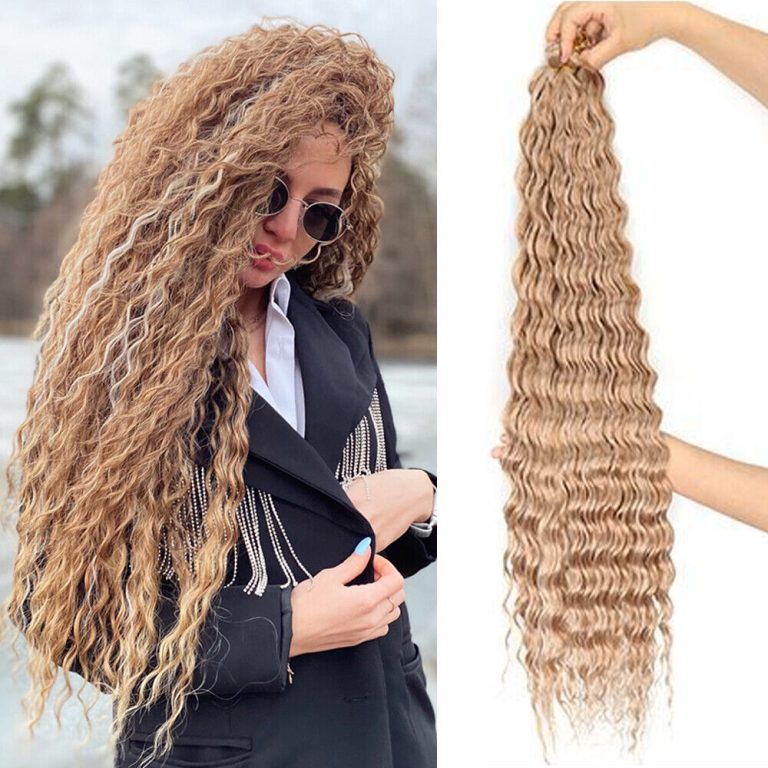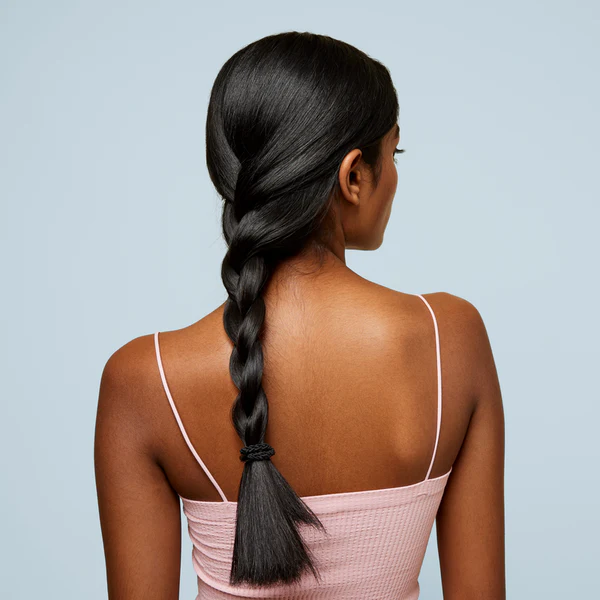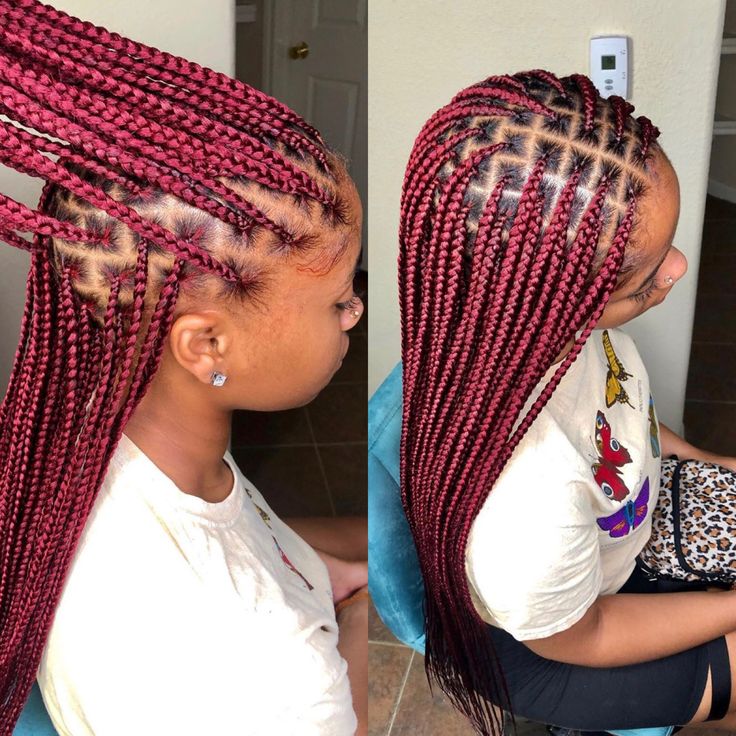
Knotless Braids 101: A Comprehensive Guide
Introduction to Knotless Braids
Knotless braids offer a modern twist on traditional braiding techniques. Unlike conventional styles, knotless braids begin at the root with natural hair and gradually integrate extensions. This technique reduces scalp tension and enhances comfort. As a result, knotless braids lay flat against the scalp, providing a sleek, natural appearance.
Definition and Basic Technique
Knotless braids are a type of protective hairstyle. They use a feed-in method, where braiding hair is gradually added to the braid without the use of knots at the roots. This method starts with your natural hair and slowly incorporates small sections of braid extensions. The process ensures a smooth, flat braid that blends seamlessly with natural hair.
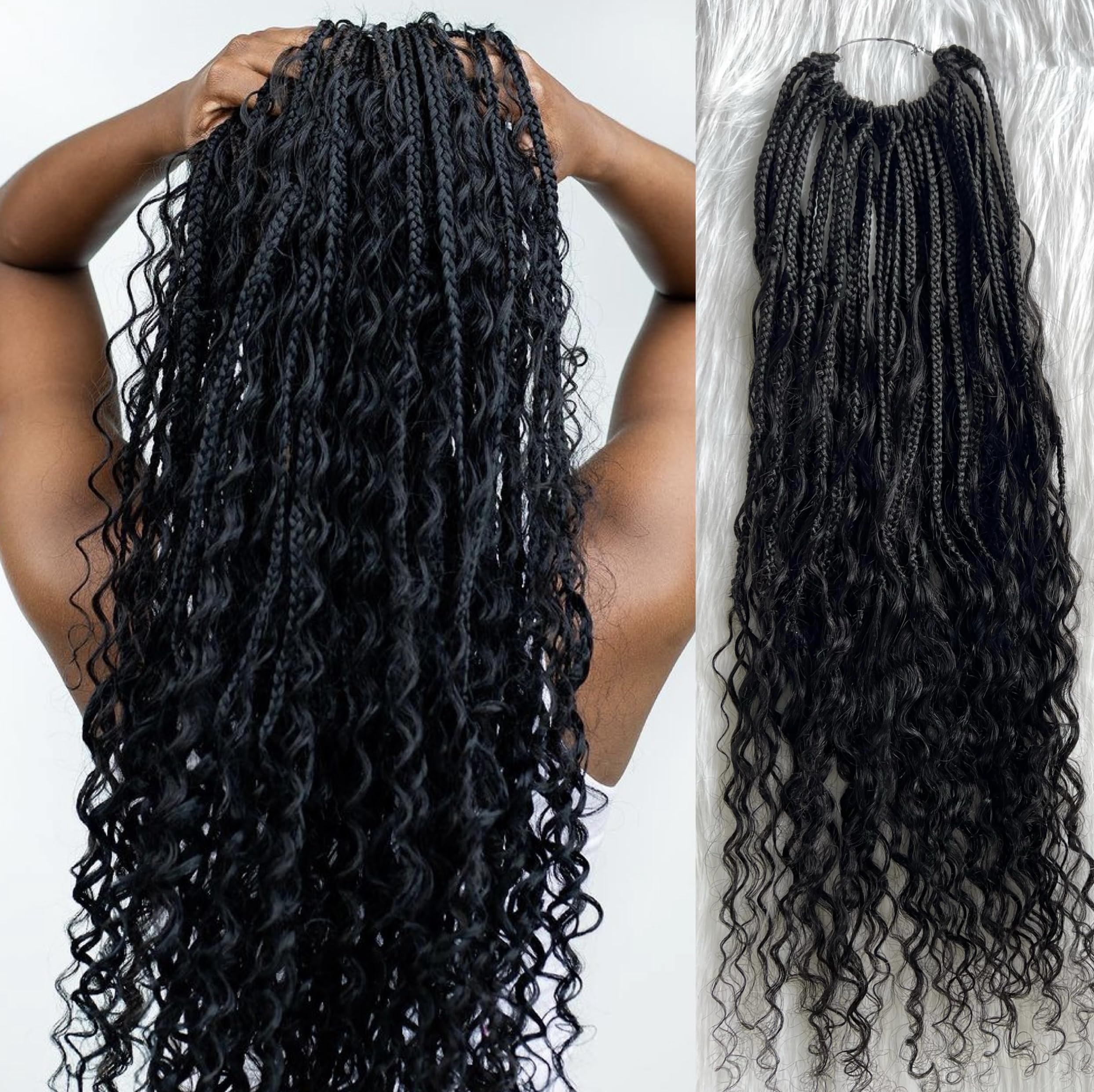
Comparison Between Knotless Braids and Box Braids
Key Differences
The main difference lies in the installation process. Knotless braids use a feed-in technique. This starts with natural hair and gradually integrates extensions without knots. Box braids begin with a knot at the root to secure extensions, giving a slightly elevated look. Consequently, knotless braids lie flatter on the scalp than box braids.
Advantages and Disadvantages of Each Style
Knotless Braids:
- Advantages: They offer less scalp tension, resulting in less pain and potential hair damage. They provide a more natural look and are easier to style in various ways. As they are lighter, they offer more comfort during wear.
- Disadvantages: This style usually costs more due to the intricate braiding technique. It also takes longer to install compared to box braids.
Box Braids:
- Advantages: These are generally less expensive and quicker to install. They can last longer, keeping their neat appearance for weeks.
- Disadvantages: They can cause more scalp tension, which might lead to discomfort or hair damage. The raised knots might make them less natural-looking and heavier.
Choosing between knotless and box braids depends on personal preference, budget, and desired look, as both have unique benefits.
Benefits of Choosing Knotless Braids
Choosing knotless braids offers several advantages over traditional braiding styles. These benefits stem from the unique installation method and how they interact with your natural hair.
Reduced Scalp Tension and Pain
Knotless braids begin with your natural hair and gradually integrate extensions. This method avoids tight knots at the root, reducing scalp tension significantly. As a result, wearers experience less pain during and after installation. This aspect makes knotless braids ideal for those with sensitive scalps or who prefer comfort.
Natural Appearance and Styling Versatility
Without the bulky knots, knotless braids lay flat against the scalp, mimicking the natural flow of your hair. This provides a seamless, sleek look that can be almost indistinguishable from your natural hair. The flexibility of the root area allows you to style your hair in various ways without discomfort or damage.
Lighter Weight and Comfort
Knotless braids require fewer hair extensions than traditional braids, making them lighter on your head. This lessens the burden on your scalp and neck, leading to enhanced comfort throughout the duration of wearing the style. Whether you’re engaging in daily activities or sleeping, these braids feel more like your natural hair.
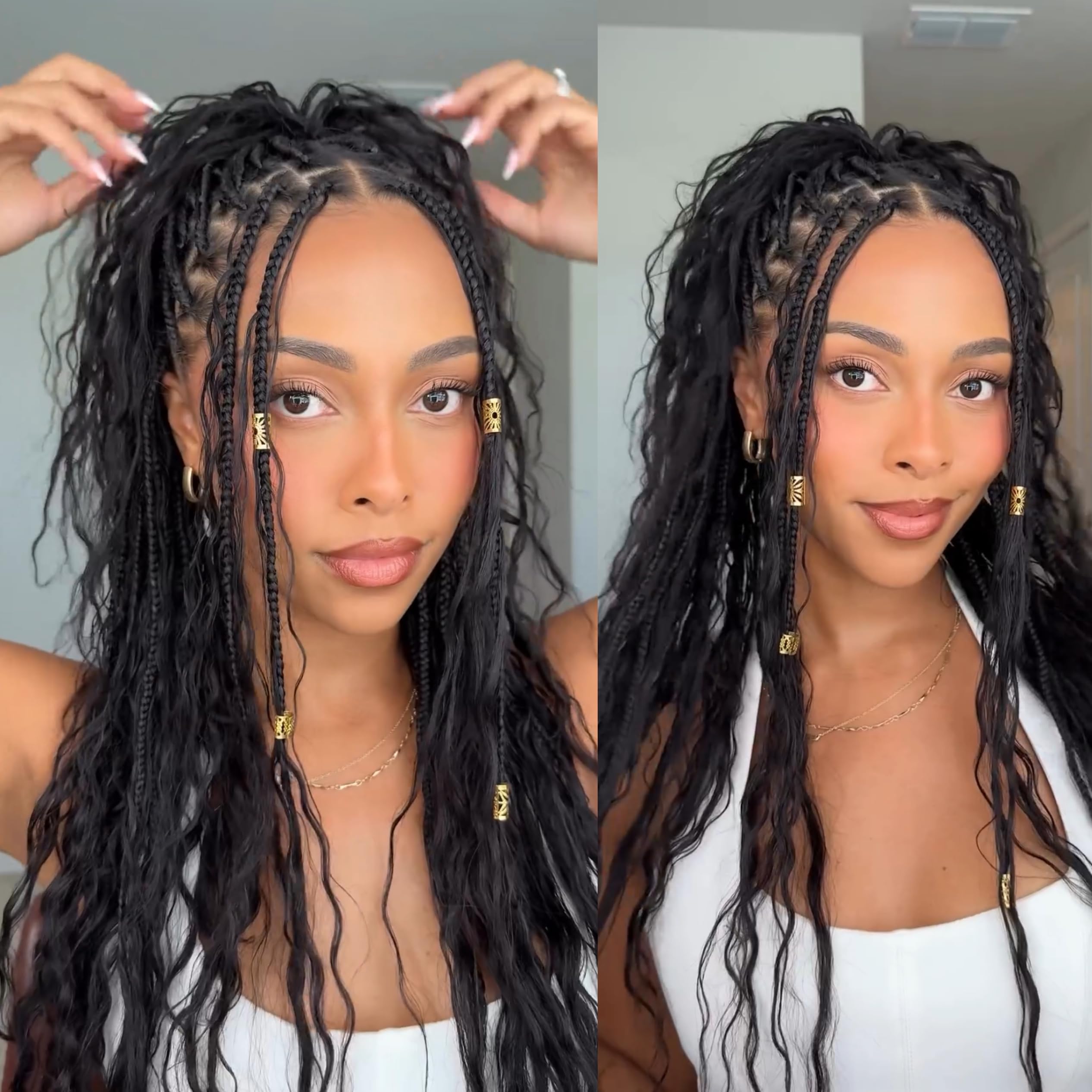
Installation Process for Knotless Braids
The installation of knotless braids requires skill and patience. It is a detailed process that results in comfortable and natural-looking braids.
Estimated Time and Costs
The time to install knotless braids can vary based on braid size and length. Generally, it may take anywhere from 4 to 8 hours. Costs typically range from $200 to $600. The pricing reflects the complexity and time invested in the technique.
Best Hair Types and Extensions
Knotless braids work well on most hair types, especially those prone to tension and breakage. Your stylist will likely recommend lightweight, pre-stretched kanekalon for the best results. This type of extension blends well with natural hair and maintains the braid’s integrity over time.
Proper Maintenance of Knotless Braids
Keeping your knotless braids looking fresh and healthy requires regular maintenance. This section will cover essential care tips and moisture-retaining strategies.
Routine Care and Moisturizing
Caring for knotless braids involves gentle washing, using a mild shampoo. It’s best to wash your braids every two to three weeks. After washing, apply a leave-in conditioner to keep the braids hydrated. Regularly apply a light hair oil to the scalp and braids. This keeps them shiny and prevents dryness. Use a silk or satin scarf at night to reduce frizz and protect your hair from breakage.
How Long to Keep Them In
It’s important not to wear knotless braids for too long. The ideal time is around 6 to 8 weeks. Keeping them in longer may stress your hair and scalp. If you notice buildup, it’s time to remove them. Consult with your stylist about the right duration for your hair type.
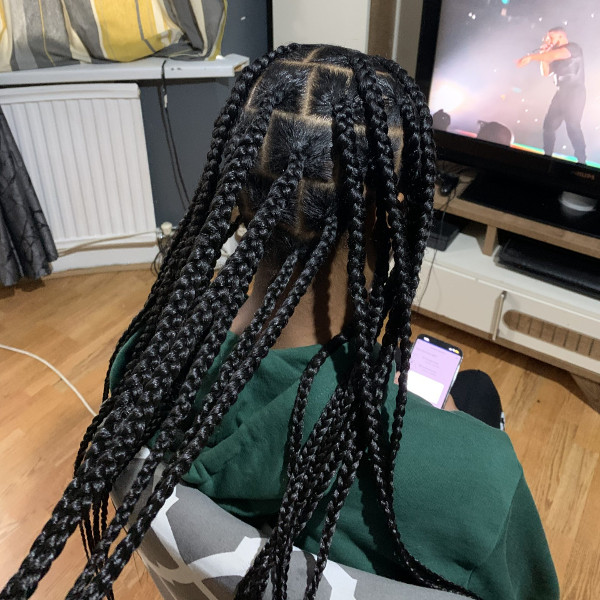
Popular Styling Options
Knotless braids are versatile, offering various stylish options that cater to individual tastes and preferences.
Curly Ends and Bohemian Looks
Curly ends are a popular choice for those seeking a playful, textured look. This style typically involves curling the ends of the braids for a wavy appearance. Bohemian knotless braids, or ‘boho braids,’ incorporate loose tresses or curls interwoven into the braids, contributing to a more relaxed, yet chic aesthetic. Both styles allow for creativity, adding elements like beads or colored threads to enhance the overall look.
Medium versus Large Braids
When choosing the size of knotless braids, consider both medium and large options. Medium braids are versatile, suitable for both casual and formal settings. They require less time to install than larger braids but provide ample style flexibility. Large braids, on the other hand, make a bolder statement. They are easier to maintain and quicker to install but may carry more weight. Your choice between medium and large largely depends on personal preference and lifestyle needs such as daily activities and maintenance commitment.
Ensuring Hair Growth with Knotless Braids
Knotless braids are more than a trendy hairstyle. They promote hair growth by being gentle on your roots. With proper care, they can be a protective style that supports the health of your natural hair.
Tips for Promoting Healthy Hair
When wearing knotless braids, follow these tips to encourage hair growth:
- Scalp Care: Keep your scalp clean and nourished. Use light oils to moisturize without buildup.
- Proper Installation: Ensure braids are not too tight. This prevents unnecessary tension and stress on hair follicles.
- Regular Washing: Gently wash braids every few weeks. This keeps the scalp and hair healthy and free from product residue.
- Moisturize: Apply a leave-in conditioner to your braids. This maintains hydration levels for your natural hair.
- Night Protection: Wrap hair in a silk or satin scarf at night. This reduces friction and helps maintain braid appearance.
- Timely Redo: Don’t leave braids in for too long. After 6 to 8 weeks, it’s time to redo or remove them to prevent stress on hair.
- Healthy Extensions: Use high-quality, lightweight extensions like pre-stretched kanekalon. They blend well and reduce weight on your scalp.
- Regular Trims: Even with braids, regular trims are important. They keep ends healthy and prevent split ends from traveling up the hair shaft.
- Balanced Diet: A nutrient-rich diet supports hair growth from within. Include vitamins and minerals essential for healthy hair.
- Gentle Styling: Avoid harsh styles while braids are in. Choose styles that don’t pull on edges or stress the hairline.
Employing these strategies while wearing knotless braids can enhance the protective qualities of the style, ensuring that your natural hair remains healthy and continues to grow.
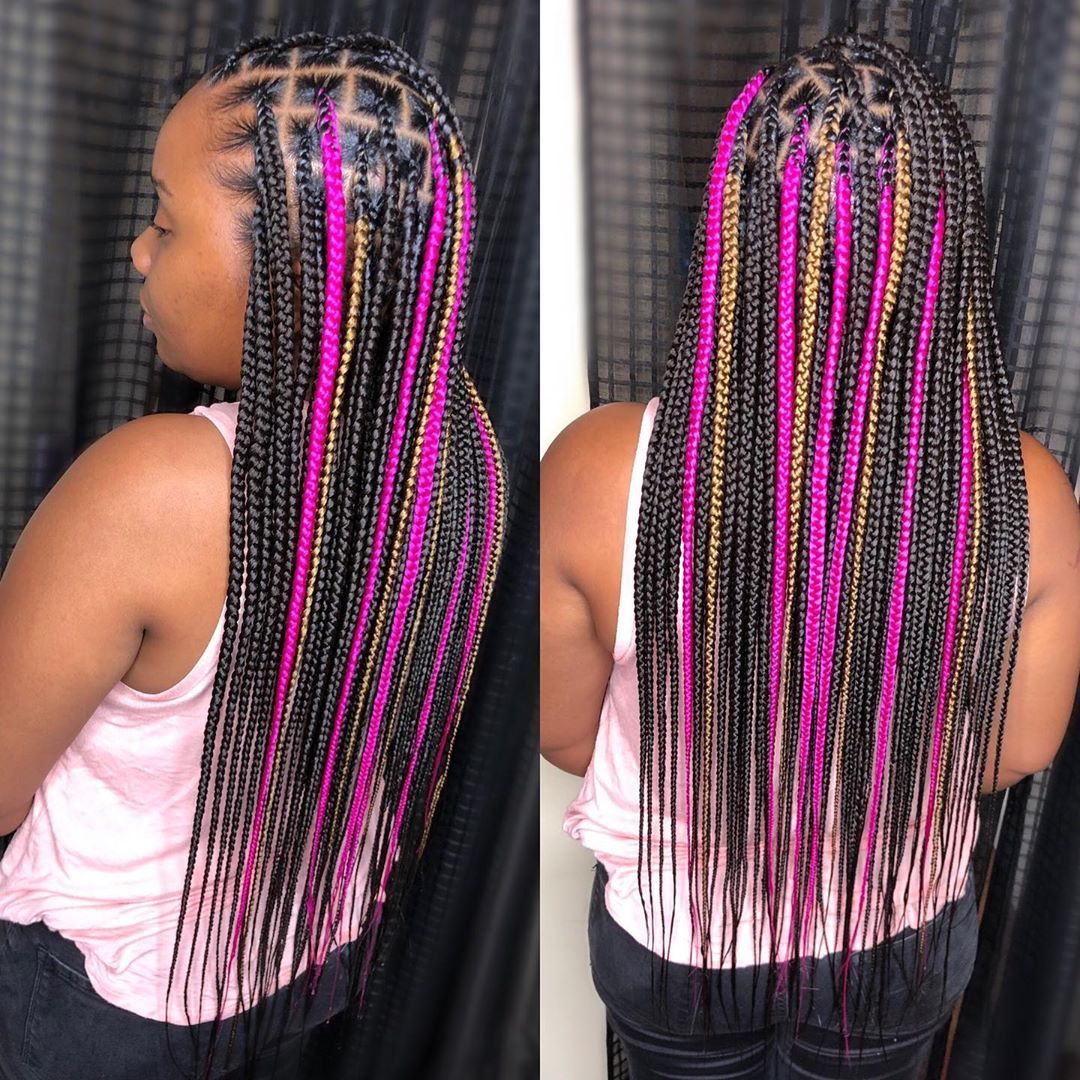
Conclusion
In conclusion, knotless braid represent a significant evolution in the world of protective hairstyles. By eliminating the traditional knots at the roots, these braids provide a more comfortable, lightweight, and seamless experience for those looking to maintain their hair health while expressing their individuality. The technique involves feeding in additional hair gradually, which not only enhances the overall look but also reduces tension on the scalp—minimizing the risk of traction alopecia, a common concern among braid wearers.
The versatility of knotless braid is another appealing aspect, as they can be styled in various ways, from long and flowing locks to chic updos, allowing for endless creativity. They’re suitable for various hair types and textures, making them an inclusive option for many individuals. Moreover, with proper care and maintenance, knotless braid can last for several weeks, providing a practical and stylish solution for those with busy lifestyles.
As we continue to explore innovative trends in hair care, knotless braid have solidified their place as a favorite among many. Whether you’re seeking a protective style for your hair, a fresh change, or simply a way to simplify your beauty routine, knotless braid offer a beautiful and empowering option. As with any hairstyle, be sure to consult with a professional stylist to achieve the best results tailored to your unique hair needs. Embrace the knotless revolution and enjoy the blend of beauty, comfort, and versatility these braid have to offer!
